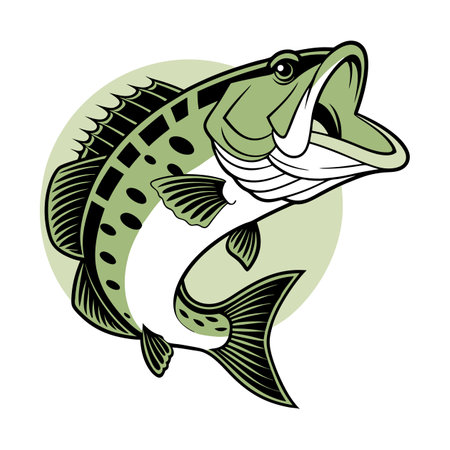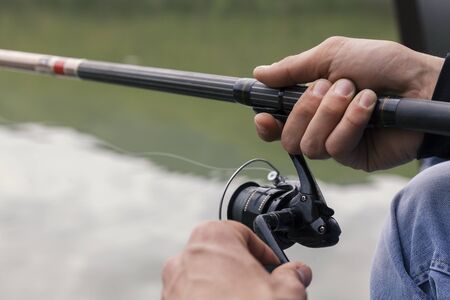1. Understanding the Mindset of the Modern Angler
In today’s world, fishing isn’t just about catching dinner — it’s about connecting with nature, enjoying peace and quiet, and respecting the environment. Modern anglers often see themselves as stewards of the water, not just sportsmen. This shift in mindset plays a big role in why many choose catch and release over keeping their catch.
Respect for Nature
Many anglers feel a deep connection to rivers, lakes, and oceans. Fishing gives them a chance to be outdoors and experience wildlife up close. Because of this connection, they want to protect fish populations for future generations. Catch and release allows them to enjoy the sport without harming the ecosystem.
The Experience Matters More Than the Catch
For modern anglers, the thrill often comes from the chase — finding the right spot, choosing the perfect lure, and feeling that tug on the line. The satisfaction is in the skill it takes to land a fish, not necessarily in taking it home. Catch and release lets them enjoy all those moments without ending a fishs life.
Motivations Behind Catch and Release
| Reason | Description |
|---|---|
| Conservation | Helps maintain healthy fish populations for future generations. |
| Sport & Challenge | Focuses on technique and skill rather than harvesting fish. |
| Personal Ethics | Belief in minimizing harm to living creatures whenever possible. |
| Environmental Awareness | A desire to protect ecosystems and practice sustainable fishing. |
A Shift in Culture
The American fishing community has seen a cultural shift in recent decades. Social media, fishing forums, and TV shows now often promote catch and release as a responsible choice. Young anglers especially are growing up with these values. They’re learning that being a good angler means being a good caretaker of nature too.
Quick Tip:
If you’re practicing catch and release, remember to handle fish gently, use barbless hooks when possible, and return them to the water quickly to increase their chances of survival.
This evolving mindset among anglers highlights how personal values and environmental awareness are shaping fishing practices across America today.
2. Emotional Rewards Over Physical Trophies
For many American anglers, the thrill of fishing goes far beyond taking home a cooler full of fish. Catch and release has become a deeply rewarding practice because it focuses on the experience itself, not just the outcome. Theres something powerful about the moment an angler feels the tug on the line, fights to reel in the fish, and then gently releases it back into the water. This emotional connection to nature and respect for wildlife often outweighs the desire to keep a physical trophy.
Anglers who practice catch and release often talk about a sense of peace, accomplishment, and even joy that comes from simply being out on the water. It’s not just about catching fish—it’s about connecting with nature, testing ones skills, and enjoying a moment of calm in a fast-paced world.
Let’s break down some key differences between emotional rewards and physical trophies:
| Aspect | Emotional Rewards (Catch & Release) | Physical Trophies (Keeping Fish) |
|---|---|---|
| Satisfaction Source | The challenge and connection with nature | Bringing home a catch for display or food |
| Memory Value | Photos, stories, personal growth | Mounted fish or meals prepared |
| Longevity of Reward | Lasting emotional impact | Temporary physical reward |
This psychological shift toward valuing experiences over possessions mirrors a broader trend in American culture—many people today are investing more in adventures than in things. In fishing, this means more folks are choosing to preserve fish populations for future generations rather than claiming them as trophies.
The satisfaction of knowing you’ve respected the environment while still enjoying your passion is hard to beat. For catch-and-release anglers, each successful release is a small act of conservation—and that feels better than any wall-mounted bass ever could.

3. Environmental Awareness and Ethical Concerns
In recent years, more anglers across the United States have become increasingly aware of their impact on the environment. This growing environmental consciousness is one of the key reasons why catch and release has gained popularity. For many, fishing isnt just about landing a big one—its about being responsible stewards of nature.
Respecting the Ecosystem
Anglers who practice catch and release often do so because they want to help maintain fish populations and preserve aquatic ecosystems for future generations. By releasing fish, they reduce pressure on local fisheries and allow species to reproduce and thrive. This approach supports a more sustainable outdoor experience and aligns with broader conservation efforts happening nationwide.
Ethical Responsibility in Modern Fishing
Today’s anglers are not only focused on the thrill of the sport—they’re also thinking about what’s right. Many feel a moral obligation to protect wildlife. Catch and release offers a way to enjoy fishing while minimizing harm. This sense of ethical responsibility is especially strong among younger generations who grew up learning about environmental issues in school or through social media.
Why Anglers Choose Catch and Release: Key Motivators
| Motivator | Description |
|---|---|
| Sustainability | Helps maintain healthy fish populations over time |
| Conservation Ethics | Aligns with values around protecting natural habitats |
| Education & Awareness | Influenced by schools, documentaries, and online content |
| Peer Influence | Encouraged by community norms and fishing groups |
A Shift in Fishing Culture
The culture around fishing in America is evolving. What was once seen purely as a means to put food on the table is now appreciated as a sport that comes with responsibilities. Anglers are sharing stories, techniques, and tips about proper catch-and-release methods—from using barbless hooks to handling fish gently—which reinforces positive habits across the community.
The Role of Social Media
Platforms like Instagram, YouTube, and TikTok have made it easier for anglers to showcase responsible fishing practices. By highlighting successful releases instead of just trophy catches, these platforms help normalize and celebrate ethical behavior in fishing circles.
This blend of environmental awareness and ethical concern continues to shape how people fish today, making catch and release not just a choice—but a statement about caring for the world we live in.
4. The Role of Community and Cultural Norms
In the United States, fishing is more than just a solo hobby—its a shared experience often shaped by community values and cultural expectations. These social influences play a big part in why many anglers choose catch and release over keeping their catch.
Peer Influence: Learning Through Observation
People often learn how to fish from family members, friends, or local mentors. When these experienced anglers practice catch and release, newcomers are likely to adopt the same habits. Peer pressure isnt always a bad thing—it can help spread sustainable practices without needing formal rules or regulations.
Fishing Communities and Shared Values
Local fishing clubs, online forums, and even social media groups create spaces where anglers connect and share their experiences. These communities often promote ethical behavior like following size limits, respecting seasonal restrictions, and practicing catch and release when appropriate. Heres how different platforms support these norms:
| Platform | Influence on Behavior |
|---|---|
| Local Fishing Clubs | Host events that promote conservation and teach responsible fishing methods. |
| Online Forums (e.g., Reddit, BassResource) | Offer advice and share stories that highlight the benefits of catch and release. |
| Social Media (e.g., Instagram, YouTube) | Showcase successful releases with hashtags like #CatchAndRelease or #FishResponsibly. |
Social Expectations Around Conservation
In many parts of the U.S., there’s a growing expectation among anglers to protect fish populations for future generations. This mindset has become part of the “fishing culture,” especially in areas where overfishing has been an issue in the past. Anglers who prioritize conservation are often respected within their communities, which encourages others to follow suit.
The Shift Toward Responsible Fishing
This cultural shift doesn’t happen overnight. It comes from years of education, awareness campaigns, and changes in how people talk about fishing. When sustainable practices become the norm in a community, individual anglers are more likely to follow them—not just because it’s the right thing to do, but because it’s what everyone else is doing too.
A Quick Look: Why Culture Matters
| Cultural Element | Impact on Catch and Release |
|---|---|
| Tradition | Passing down eco-friendly habits through generations. |
| Community Recognition | Earning respect by practicing sustainable fishing. |
| Group Norms | Encouraging responsible behavior through shared expectations. |
Understanding how community and culture influence angler behavior helps explain why catch and release is more than just a personal choice—its part of a larger movement toward responsible fishing across the country.
5. The Conservationist Identity
For many American anglers, fishing is more than just a pastime—its a way of life that reflects their values and beliefs about nature. One powerful reason why many choose catch and release is because they see themselves as conservationists. This sense of identity plays a big role in shaping how they fish, what choices they make on the water, and how they talk about their experiences with others.
Anglers as Stewards of the Water
Across the U.S., from mountain streams in Colorado to bass lakes in Florida, countless anglers feel a personal responsibility to protect aquatic ecosystems. They often refer to themselves as “stewards” or “guardians” of the waters they fish. This mindset encourages practices like catch and release, which help maintain healthy fish populations for future generations.
Identity Drives Behavior
When someone identifies as a conservation-minded angler, catch and release becomes more than a technique—it becomes part of who they are. This internal motivation is often stronger than rules or regulations. It’s not about being told what to do; it’s about doing what feels right based on personal values.
Common Traits of Conservationist Anglers
| Trait | Description |
|---|---|
| Respect for Nature | They value balance in ecosystems and want to minimize their impact. |
| Long-Term Thinking | They fish with future generations in mind, aiming to preserve resources. |
| Community Influence | They often share their views with others, promoting ethical fishing habits. |
| Pride in Stewardship | They take pride in protecting local waters and the wildlife within them. |
Social Reinforcement Matters Too
This identity is reinforced by community norms and peer recognition. In many fishing circles, especially fly-fishing communities or bass clubs, catch and release is seen as the honorable thing to do. Sharing photos of released fish online or telling stories about careful handling techniques helps reinforce this conservationist image among peers.
A Growing Trend Among Younger Anglers
Younger generations are increasingly embracing this identity, influenced by environmental education and social media awareness. Brands and influencers in the fishing world also promote sustainable practices, making catch and release not just acceptable—but cool.


